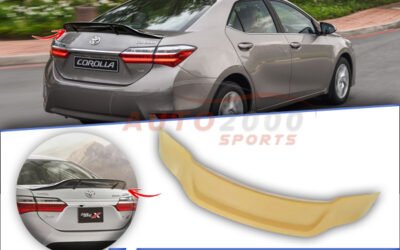Honda Pakistan’s Robust Profit Amidst Car Price Surge
In the face of a challenging economic landscape and a surge in car prices, Honda Pakistan has defied expectations by reporting thriving profits. This unexpected turn in financial fortunes raises questions about the factors contributing to Honda’s success, the impact of increased car prices on consumers, and the broader implications for the automotive industry. This article aims to unravel the intricacies of Honda Pakistan’s profitability against the backdrop of rising car prices.
Economic Context and the Surge in Car Prices
Understanding the Economic Landscape
Set the stage by examining the economic factors that have led to an overall surge in car prices. Explore aspects such as inflation, currency fluctuations, and global supply chain disruptions that have collectively contributed to an environment where the cost of owning a car is on the rise.
The Ripple Effect on the Automotive Industry
Delve into how the surge in car prices has affected the entire automotive industry. From manufacturing costs to consumer purchasing power, analyze the ripple effect and the challenges faced by both manufacturers and buyers in this inflationary environment.
Honda Pakistan’s Profitability: Unraveling the Factors
Strategic Cost Management
Investigate Honda Pakistan’s approach to cost management. Explore how the company has strategically navigated challenges such as increased raw material costs, ensuring efficient production processes, and negotiating with suppliers to maintain a competitive edge.
Product Mix and Consumer Preferences
Examine the product mix offered by Honda in the Pakistani market. Assess how the company has aligned its product offerings with consumer preferences, adapting to market demands and ensuring a steady flow of revenue despite the prevailing economic challenges.
Consumer Impact: Balancing Affordability
Affordability Challenges for Consumers
Discuss the challenges faced by consumers in light of rising car prices. Explore how the increased cost of ownership has impacted purchasing decisions, with potential buyers reconsidering their budget constraints and evaluating alternatives in the market.
Aspirational Appeal and Brand Loyalty
Contrast the affordability challenges with the aspirational appeal of Honda cars. Examine how the brand’s reputation for quality and performance has influenced consumer loyalty, leading some buyers to prioritize the Honda brand despite the higher costs.
Market Competition and Positioning Strategies
Competitive Landscape in Pakistan’s Auto Industry
Provide an overview of the competitive landscape in Pakistan’s auto industry. Explore how Honda positions itself relative to other manufacturers and how its pricing strategies may differ or align with industry trends.
Marketing and Value Proposition
Examine Honda’s marketing and value proposition strategies. Investigate how the company communicates its brand values and product benefits to consumers, potentially influencing purchasing decisions in a market where prices are on the rise.
Regulatory Environment and Future Outlook
Government Policies and Impact on Car Prices
Explore the role of government policies and regulations in shaping the automotive industry. Discuss how changes in taxation, import duties, and other regulatory factors can influence car prices and, consequently, impact the profitability of manufacturers.
Future Outlook for Honda Pakistan
Conclude by providing insights into Honda Pakistan’s future outlook. Consider the potential factors that could influence the company’s profitability, such as economic trends, regulatory changes, and the evolving preferences of Pakistani car buyers.
Conclusion
Summarize the key takeaways from the analysis, emphasizing how Honda Pakistan has navigated the challenges posed by a surge in car prices to achieve robust profitability. Conclude with reflections on the resilience and adaptability demonstrated by the company, offering a glimpse into the intricate balance between market dynamics, consumer behavior, and strategic decision-making in the automotive industry.












